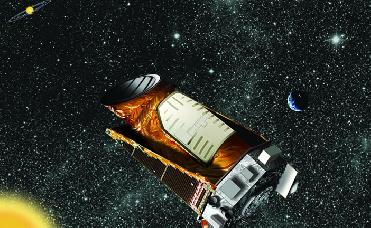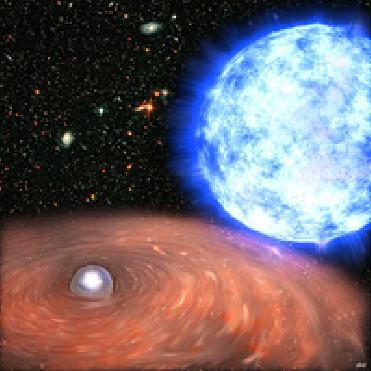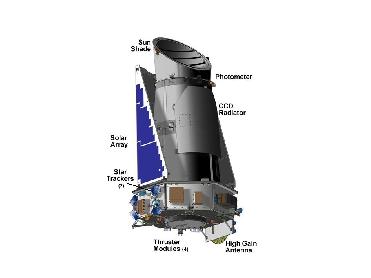
NASA's Kepler Telescope has begun its search for other Earth-like worlds. Image Credit: NASA
LONDON (BNS): Since the launch of NASA�s Kepler mission earlier this year, astronomers have been keenly awaiting the first detection of an Earth-like planet around another star.
Now, a team of scientists led by Dr David Kipping of University College London believes that they may even find habitable �exomoons� too.
Kepler�s primary mission is to monitor thousands of stars looking for characteristic dips in their brightness as orbiting planets pass in front of them in so-called �transit� events. The orbiting observatory should be able to capture these transits with extremely high accuracy.
Dr Kipping has already devised a method for detecting exomoons but no-one was sure whether it could really be used with current technology. He and his team have now modelled the properties of the instruments on Kepler, simulating the expected signal strength that a habitable moon would generate.
The new results will appear in a paper in Monthly Notices of the Royal Astronomical Society.
An exomoon�s gravity tugs on the planet it orbits, making the planet wobble during its orbit around its host star. The resulting changes in the position and velocity of the planet should be detectable by Kepler through accurate timing of the transits.
The scientists considered a wide range of possible planetary systems and found that a fluffy Saturn-like planet (the ringed world is extremely low in mass for its size) gives the best possible chance for detecting a moon, rather than a denser Jupiter-like world. This is because planets like Saturn are large � blocking out a lot of light as they pass in front of their star � but very light, meaning they will wobble much more than a heavy planet.
If the Saturn-like planet is at the right distance from its star, then the temperature will allow liquid water to be stable on any sufficiently large moons in orbit around it and these could then be habitable.
The team found that habitable exomoons down to 0.2 times the mass of the Earth are readily detectable with Kepler. Potentially the observatory could look for Earth-mass habitable moons around 25,000 stars up to 500 light-years away from the Sun. In the whole sky, there should be millions of stars which could be surveyed for habitable exomoons with present technology.
Whether or not such bodies are common in the Galaxy is unknown but astronomers now have the tools and methodology to find out.
�For the first time, we have demonstrated that potentially habitable moons up to hundreds of light years away may be detected with current instrumentation,� said Dr. Kipping.
�As we ran the simulations, even we were surprised that moons as small as one-fifth of the Earth's mass could be spotted. It seems probable that many thousands, possibly millions, of habitable exomoons exist in the Galaxy and now we can start to look for them,� the researcher added.
 Previous Article
Previous Article Next Article
Next Article













The Indian Air Force, in its flight trials evaluation report submitted before the Defence Ministry l..
view articleAn insight into the Medium Multi-Role Combat Aircraft competition...
view articleSky enthusiasts can now spot the International Space Station (ISS) commanded by Indian-American astr..
view article